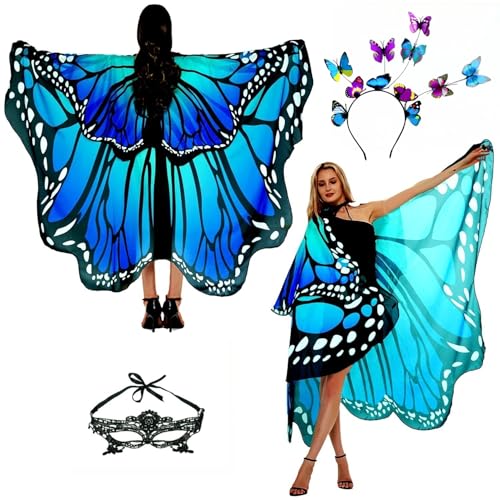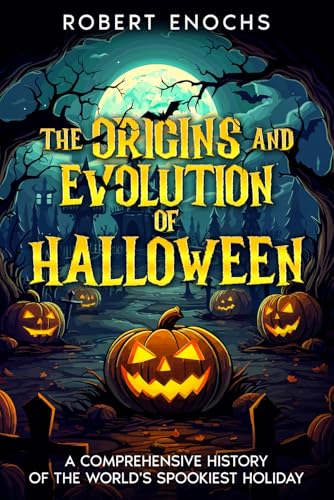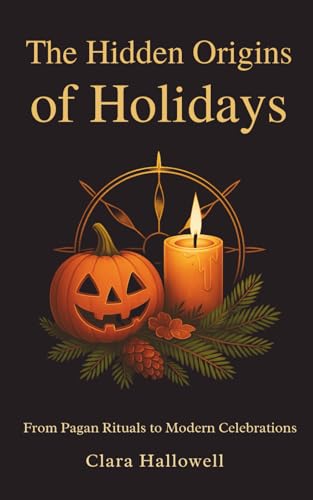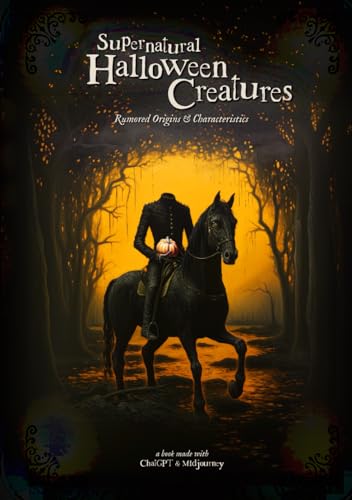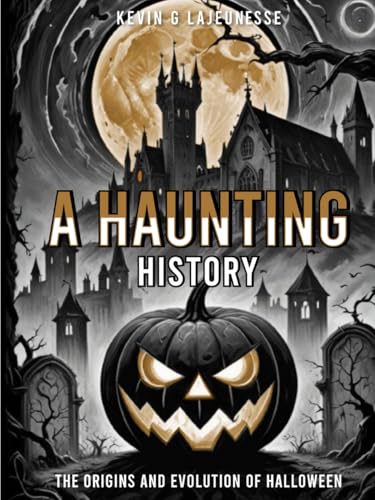Are you ready for some spooky fun? Halloween is just around the corner, and it’s time to embrace the magic and mystery of this beloved holiday. But have you ever wondered what Halloween actually stands for? In this article, we’ll explore the origins and traditions of Halloween, uncovering the deeper meaning behind this bewitching celebration. So grab your broomstick and get ready to dive into the fascinating world of Halloween!
When you think of Halloween, what comes to mind? Perhaps it’s costumes, candy, and trick-or-treating. But did you know that Halloween has ancient roots that go back thousands of years? This holiday, also known as All Hallows’ Eve, has its origins in the ancient Celtic festival of Samhain. It marked the end of the harvest season and the beginning of winter, and was believed to be a time when the boundary between the living and the dead was blurred. Today, Halloween is a unique blend of ancient traditions and modern customs, creating a magical experience for people of all ages.
Halloween isn’t just about dressing up and collecting candy – it’s also a time to connect with our past and celebrate the cycle of life and death. The symbolism behind Halloween is rich and meaningful. From jack-o’-lanterns to black cats, each element has its own significance. By understanding the deeper meaning behind Halloween, we can fully appreciate the enchantment and wonder of this special holiday. So get ready to delve into the mysteries of Halloween and discover the hidden symbolism that makes it truly extraordinary.
The History of Halloween
As a passionate Halloween enthusiast, you love going all out to celebrate this enchanting holiday. With your history of working at Halloween shops, you have a deep appreciation for the traditions and customs that have shaped Halloween into what it is today. Let’s dive into the fascinating history of Halloween and discover why it holds such a special place in our hearts.
Halloween originated from the ancient Celtic festival of Samhain, which marked the end of the harvest season and the beginning of winter. It was believed that on the night of October 31st, the boundary between the living and the dead weakened, allowing spirits to roam freely. To ward off these wandering souls, the Celts would light bonfires and wear costumes.
As time went on, the influence of Christianity began to blend with the Celtic traditions. In the 8th century, Pope Gregory III declared November 1st as All Saints’ Day, also known as All Hallows’ Day. The evening before, which was the Celtic festival of Samhain, came to be known as All Hallows’ Eve, eventually evolving into Halloween as we know it.
Throughout history, Halloween has been shaped by various cultural influences. When Irish and Scottish immigrants came to America in the 19th century, they brought their Halloween traditions with them. These traditions became woven into the fabric of American culture, giving rise to customs like trick-or-treating and carving pumpkins.
The symbolism behind Halloween elements also adds to its allure. Jack-o’-lanterns, for example, originated from Irish folklore about a man named Stingy Jack, who outsmarted the devil. Black cats have long been associated with witches, as they were believed to be their familiars.
Understanding the rich history of Halloween allows us to fully appreciate the magic and excitement that surround this beloved holiday. Each year, as you search for the best Halloween products and plan your elaborate decorations, remember the ancient traditions and customs that have shaped Halloween into the celebration it is today. Embrace the cycle of life and death, connect with your past, and let the spirit of Halloween fill your heart with joy.
So now that you know the history of Halloween, it’s time to explore the next section: “The Modern Halloween Experience.” Let’s dive into the exciting ways we celebrate Halloween today.
Stay tuned for the next section!
Origins of Halloween Traditions
As a dedicated Halloween enthusiast like Ricky, you might find yourself wondering about the origins of the beloved traditions that make this holiday so special. From jack-o’-lanterns to black cats, each element holds its own rich history and symbolism. Let’s dive into the fascinating origins of these Halloween traditions!
Jack-o’-Lanterns: A Fiery Tradition
Did you know that the origins of jack-o’-lanterns can be traced back to ancient Celtic folklore? Back then, people would carve terrifying faces into turnips or potatoes and place candles inside to ward off evil spirits. This tradition was believed to keep the souls of the dead away from the living.
When Irish immigrants arrived in America during the 19th century, they discovered that pumpkins were the perfect substitute for turnips. Thus, the iconic tradition of carving pumpkins into jack-o’-lanterns was born! Today, the glowing faces of jack-o’-lanterns continue to be a cherished symbol of Halloween.
Black Cats: Mysterious Guardians
Imagine walking down a dimly lit street on Halloween night and coming across a sleek black cat. While some may feel a sense of unease, others believe that black cats bring good luck. But how did these midnight felines become associated with Halloween?
Black cats have been intertwined with folklore and superstition throughout history. In ancient Egyptian mythology, they were considered sacred and believed to bring good fortune. However, during the Middle Ages, these mystical creatures were associated with witchcraft and evil. This dark reputation eventually led to their connection with Halloween and all things spooky. So, while some may see black cats as mysterious guardians, others may view them as an omen of bad luck on this bewitching night.
Get Ready for the Magic of Halloween
Just scratching the surface of Halloween traditions gives you a glimpse into the enchanting history behind this extraordinary holiday. From the flickering glow of jack-o’-lanterns to the mystery of black cats, these traditions continue to captivate our imagination every year.
Symbolism of Halloween
As a Halloween enthusiast myself, I understand the excitement and anticipation that comes with this spooktacular holiday. Halloween isn’t just about costumes and candy; it has a rich history and deep symbolism that adds to the magic of the season. Let’s dive into the fascinating symbolism behind Halloween!
Celebration of the Harvest
Halloween, also known as Samhain in ancient Celtic traditions, marks the end of the harvest season. It’s a time to give thanks for the bountiful crops, as well as to honor and remember our ancestors. The fall colors, cornucopias, and pumpkin patches all symbolize the abundance of the harvest season. Embracing this symbolism can add a deeper appreciation for the beauty of autumn and the abundance of nature.
Connection to the Spirit World
One of the most intriguing aspects of Halloween is its connection to the spirit world. It is believed that during this time, the veil between the living and the dead is the thinnest. This is symbolized by the tradition of setting up altars to honor and remember loved ones who have passed away. Additionally, the use of costumes and masks on Halloween can be seen as a way to disguise oneself from the wandering spirits, allowing us to interact with them without fear.
Embracing the Supernatural
Halloween is a time to embrace the supernatural and the unknown. The imagery of witches, ghosts, and vampires represents the mystery and excitement of the holiday. These symbols have their roots in ancient folklore and mythology, where they were believed to possess powerful magic or have connections to the spirit world. Incorporating these symbols into your Halloween decorations or costumes can bring a sense of intrigue and enchantment to your celebrations.
Manifestation of Inner Fears
Another significant aspect of Halloween symbolism is the opportunity to confront and overcome our inner fears. For many, the thrill of haunted houses, scary movies, and spooky stories allows us to face our fears in a safe and controlled environment. This symbolism reminds us that, just like the characters in our favorite horror films, we have the strength to overcome our fears and emerge stronger on the other side.
Halloween and Samhain
As a Halloween enthusiast like you, I’m sure you know that Halloween has deep roots that stretch back centuries. One of the most significant influences on Halloween is the ancient Celtic festival of Samhain.
During Samhain, which marked the end of the harvest season, the Celts believed that the boundary between the spirit world and the physical world was blurred. This is why Halloween is often associated with ghosts, spirits, and supernatural beings. It’s a night where we celebrate and honor our ancestors and the spirits that have come before us.
Don’t you just love the thrill of embracing the unknown and letting your imagination run wild on Halloween? It’s that special time of the year where we can wear costumes, carve pumpkins, and embrace the spooky side of life.
For someone like me, who has worked at Halloween shops and immersed myself in the magic of the season, Samhain carries an even greater significance. It’s a time to reconnect with our roots, acknowledge the cycle of life and death, and confront our inner fears.
Throughout history, people have used Halloween as an opportunity to face their fears and overcome them. It’s almost like a rite of passage, a way of asserting our strength in the face of darkness. When we dress up in costumes, it’s not just about having fun – it’s about confronting our fears head-on.
So, as you prepare for Halloween this year, let’s remember the ancient traditions that have shaped this enchanting holiday. Let’s honor our ancestors and embrace the supernatural. And most importantly, let’s use this opportunity to face our inner fears, knowing that we have the power to overcome them.
Happy Halloween, my fellow enthusiasts! Keep the spirit of Samhain alive and enjoy the magic of the season.
Conclusion
Now that you have explored the origins of Halloween, you have gained a deeper understanding of what this holiday truly stands for. From its ancient Celtic roots to the blurred boundary between the spirit world and the physical world during Samhain, Halloween is a time to honor ancestors and confront our inner fears. By dressing up in costumes, we have the opportunity to face these fears head-on and celebrate the supernatural beings that have come before us.
By delving into the history and traditions of Halloween, we can appreciate the rich cultural significance of this holiday. It is not just a night of tricks and treats, but a time to connect with our past and embrace the spirit world. So, as you celebrate Halloween this year, remember the ancient traditions that have shaped this holiday and let the spirits guide you through this magical night.



